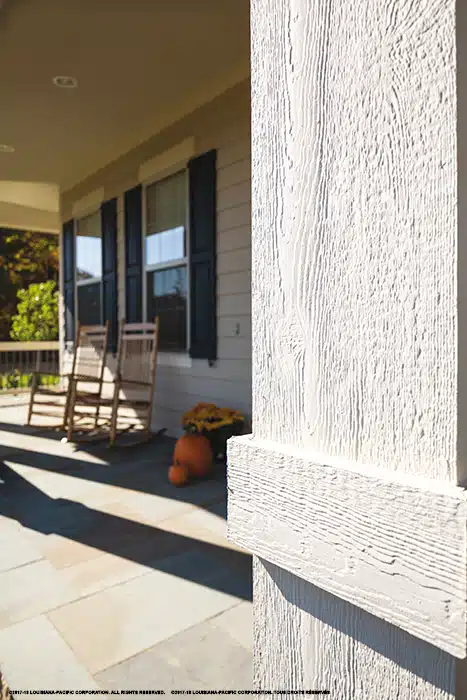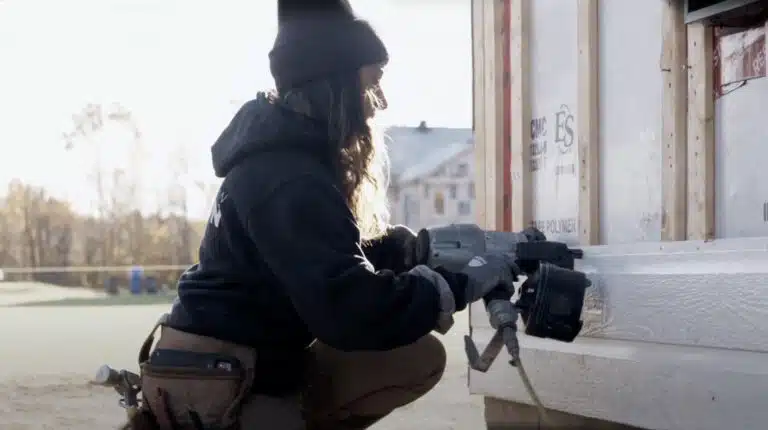
Maintain your exterior siding in 4 easy steps
November 20, 2019
4 easy steps for prolonging the life of exterior siding and keeping it looking its best for years to come.
Step #1: Visually inspect the siding
Regularly check the appearance of your siding. A quick visual inspection will reveal any areas showing buildup of organic or inorganic substances. We recommend inspecting siding least once a year. This will allow you to remove dirt or repair any damaged or loose boards before it becomes a problem.
Step #2: Remove accumulated dirt or mold
Most homes are surrounded by various sources of dirt. Heavy rain splashing up dirt from nearby flowerbeds is just one example. Getting dirt on your siding isn’t a problem in itself, but it should be removed as soon as possible.
A simple spray of water from a garden hose is often all you need. Just be sure the pressure is under 100 psi to avoid causing damage to the siding. If a garden hose doesn’t remove all the dirt, gently scrub the soiled area with a soft bristle brush and diluted mild dishwashing soap or 1/3 cup of non-abrasive laundry detergent diluted in 3 litres (3/4 gallons) of water. Then rinse with a garden hose.
Seeing signs of mold? No need to panic. Mold naturally forms on surfaces exposed to weather or moisture. To grow, its needs moisture and a food source. If your siding is showing signs of mold, simply remove it using a soft bristle brush such as those used to clean car exteriors.
Step #3: Repair scratches, chips and bumps
Mêmes si certains revêtements extérieurs comme ceux de Maibec sont extrêmement résistants aux chocs, le fini demeure néanmoins sujet aux égratignures ou à l’écaillage s’il reçoit un choc violent (ex. : pierre projetée par la souffleuse ou roue du barbecue frottant la base du revêtement). Si jamais un tel événement survient, il est important de réparer le ou les défauts. Appliquez de la teinture de retouche à l’endroit endommagé seulement afin de préserver l’intégrité de votre revêtement
Step #4: Check the sealant
Periodically check the condition of sealant around all joints and replace it as soon as it begins to harden and / or crack. Only properly sealed joints can prevent water penetration. Sealant should be used at butt joints and wherever the siding meets other surfaces such as trim, door jambs, masonry, etc. See our installation guide for all locations where sealant is needed.
Pour plus de détails sur la façon d’entretenir votre revêtement extérieur, n’hésitez pas à consulter notre guide d’entretien pour le bois véritable !
With this minimal maintenance, your siding will remain in good condition and be ready for a fresh new coat when it comes time to restain it. Keep in mind that siding sometimes needs to be restained before the warranty ends, especially if it gets a lot of direct sunlight or is exposed to harsh weather.
But restaining is definitely worth the effort. A fresh coat of stain will make your siding look like new. And while you’re at it, don’t be afraid to try a new colour – it’s a great opportunity to keep your home up on the latest trends.
Related articles

Your guide to the perfect installation of Maibec CanExel

Designer Talk: Farmhouse Style
Join our list
Subscribe to our newsletter to access our most exclusive new products and receive design and maintenance tips.

